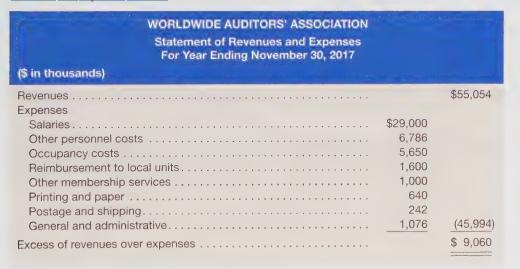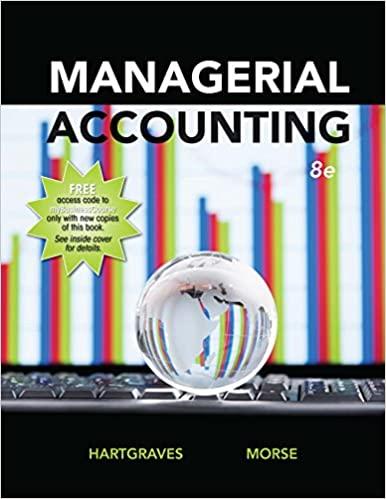The Worldwide Auditors Association is a professional association. Its current membership totals 97,600 worldwide. The association operates
Question:
The Worldwide Auditors’ Association is a professional association. Its current membership totals 97,600 worldwide. The association operates from a central headquarters in New Zealand but has local membership units throughout the world. The local units hold monthly meetings to discuss recent developments in accounting and to hear professional speakers on topics of interest. The association’s journal, Worldwide Auditor, is published monthly with feature articles and topical interest areas. The association publishes books and reports and sponsors continuing education courses. A statement of revenues and expenses follows:

Additional information follows:
* Membership dues are \($400\) per year, of which \($100\) is considered to cover a one-year subscription to the association’s journal. Other benefits include membership in the association and unit affiliation.
* One-year subscriptions to Worldwide Auditor are sold to nonmembers for \($160\) each. A total of 2,500 of these subscriptions were sold. In addition to subscriptions, the journal generated \($400,000\) in advertising revenue. The cost per magazine was $40.
* A total of 30,000 technical reports were sold by the Books and Reports Department at an average unit selling price of \($90\). Average costs per publication were $24.
* The association offers a variety of continuing education courses to both members and nonmembers. During 2017, the one-day course, which cost participants an average of \($500\) each, was attended by 31,300 people. A total of 1,985 people took two-day courses at a cost of \($800\) per person.
* General and administrative expenses include all other costs incurred by the corporate staff to operate the association.
¢ The organization has net capital assets of \($90,060,000\) and had an actual cost of capital of 9 percent.
Required
a. Give some examples of key financial performance indicators (no computations needed) that could be part of a balanced scorecard for the IAA.
b. Give some examples of key customer and operating performance indicators (no computations needed) that could be part of a balanced scorecard for IAA.
Step by Step Answer:






